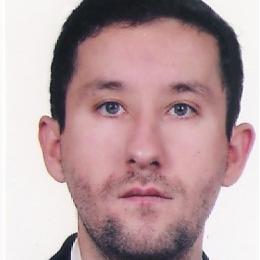Contemporary Advances in Musculoskeletal Ultrasonography: Clinical Outcomes and Treatment Implications
A special issue of Journal of Clinical Medicine (ISSN 2077-0383). This special issue belongs to the section "Nuclear Medicine & Radiology".
Deadline for manuscript submissions: 25 September 2024 | Viewed by 957
Special Issue Editors
Interests: ultrasonography; shear-wave elastography; muscles; physical therapy; orthopedic outcomes
Special Issues, Collections and Topics in MDPI journals
Interests: ultrasonography; physical therapy; orthopedics; muscle examination
Special Issues, Collections and Topics in MDPI journals
Special Issue Information
Dear Colleagues,
Musculoskeletal ultrasonography may provide many benefits for the diagnostics and monitoring of the human locomotor system. The main research goal for this Special Issue is to collect research papers based on clinical medicine outcomes and treatment implications, especially focused on contemporary advances and trends in medicine and rehabilitation.
This Special Issue topic “Contemporary Advances in Musculoskeletal Ultrasonography: Clinical Outcomes and Treatment Implications" determines the link between medicine and physical therapy.
Potential topics:
- Literature review and meta-analysis proposing medical outcomes investigated by ultrasonography after different surgical interventions in the shoulder, elbow, knee, and ankle.
- Novel applications for ultrasonography imagining in the shoulder, elbow, knee, and ankle. Original research and randomized-control trials based on analysis of ultrasonography after musculoskeletal surgical interventions.
- Ultrasonographical evaluation of the musculoskeletal system during and/or after physical therapy intervention.
- The future perspective of ultrasonography in medicine and physical therapy. Ultrasonography in other fields of medicine, e.g.: neurology, pediatrics, cardiology.
Dr. Sebastian Klich
Prof. Dr. Marcos José Navarro-Santana
Guest Editors
Manuscript Submission Information
Manuscripts should be submitted online at www.mdpi.com by registering and logging in to this website. Once you are registered, click here to go to the submission form. Manuscripts can be submitted until the deadline. All submissions that pass pre-check are peer-reviewed. Accepted papers will be published continuously in the journal (as soon as accepted) and will be listed together on the special issue website. Research articles, review articles as well as short communications are invited. For planned papers, a title and short abstract (about 100 words) can be sent to the Editorial Office for announcement on this website.
Submitted manuscripts should not have been published previously, nor be under consideration for publication elsewhere (except conference proceedings papers). All manuscripts are thoroughly refereed through a single-blind peer-review process. A guide for authors and other relevant information for submission of manuscripts is available on the Instructions for Authors page. Journal of Clinical Medicine is an international peer-reviewed open access semimonthly journal published by MDPI.
Please visit the Instructions for Authors page before submitting a manuscript. The Article Processing Charge (APC) for publication in this open access journal is 2600 CHF (Swiss Francs). Submitted papers should be well formatted and use good English. Authors may use MDPI's English editing service prior to publication or during author revisions.
Keywords
- ultrasonography
- imaging
- medicine
- outcomes
- physical therapy
- orthopedics
- treatment







